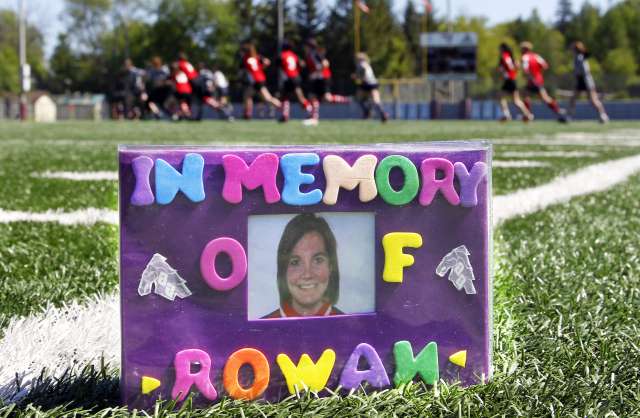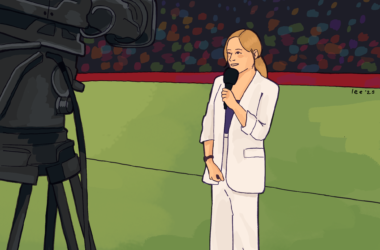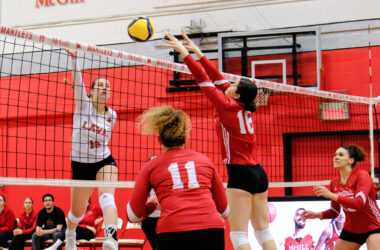Rowan Stringer was a 17-year-old high school athlete from Ottawa. She picked up rugby in Grade 11, when her high school offered a varsity girls team, and grew to love the sport so much that she joined a club team that summer. Later, in May 2013, Stringer was hit hard during a rugby match. She thought that she may have been concussed, but wanted to compete in her next match, so she ignored her symptoms and played anyways just two days later. She suffered another concussion.
Experiencing repeated head trauma in such quick succession leads to Second Impact Syndrome (SIS), a condition that can occur when a person is concussed for a second time before their brain has recovered from the initial concussion. Even a minor hit can immediately cause the pressure in a person’s brain to increase and must be treated within minutes. In Stringer’s case, SIS led to her death on May 12, Mother’s Day, four days after the second concussion.
After her passing, Dr. Charles Tator, a professor of neurosurgery at the University of Toronto who studies spinal cord injury and traumatic brain injury, requested access to Stringer’s medical documentation. Tator was searching for ways to prevent such tragedies in the future and researched the case for several months before delivering a report at the inquest held in an Ottawa court in June 2015. Based on his report and testimony, as well as statements from Stringer’s friends, family, and fellow members of the rugby community, the jury came up with 49 recommendations to improve concussion awareness and treatment in Ontario. The first of these recommendations was to enact “Rowan’s Law”—an initiative intended to inform young athletes and their guardians on the seriousness of concussions.
Rowan’s Law, formally known as Bill 193, is a huge step in the right direction for protecting young athletes and changing how concussions are perceived in youth sports culture. Better education will help kids more effectively identify when they are concussed and understand the serious consequences of playing with concussions. Coaches and parents will know better when to keep an athlete out of the game and when it’s safe to let them back in.
Specifically, Rowan’s Law defines protocols for when an athlete should be removed from play and when they should be allowed to return. It also requires parents and coaches to learn about concussion identification and management from online resources. It’s often difficult to diagnose a concussion, especially for people who have little to no understanding of the symptoms, so these new protocols will have an important impact on protecting youth athletes.
Rowan’s Law includes a code of conduct for athletes and mandates an advisory committee to consult with Ontario’s Premier. The code is a set of in-game rules tailored to each sport. Meanwhile, the committee helps to implement the rest of the jury’s recommendations into provincial law. It’s made up of medical experts, youth sports leaders, athletes, and Stringer’s father, Gordon. The committee first convened in 2016 and met several times before proposing concussion legislation in December 2017. The final hearing for the legislation took place on March 6, 2017—when it passed with all-party support. In passing Rowan’s Law, Ontario lawmakers are making a bold and long-overdue statement: They are ready to lead the way on big legislative and cultural changes needed to fight the damage concussions do children every year.
Similar laws have been passed all across the United States, but Rowan’s Law is the first of its kind in Canada. Gordon Stringer hopes that other provinces will follow Ontario’s lead and enact what could be life-saving legislation.
“The heavy lifting has been done here in Ontario, but this is not something that’s an Ontario issue,” Mr. Stringer said in an interview with the CBC. “This is something that needs to be addressed across Canada.”
Rowan’s story is heartbreaking—but there’s a light at the end. The new legislation will likely save many young athletes from sustaining irreparable—even fatal—brain damage. Using Rowan’s Law as an example, other provinces should act before preventable tragedy strikes again; lawmakers across Canada must learn from Rowan’s story and make concussion legislation a priority.
But laws are only the beginning. A concussion needs to be accepted as one of the most dangerous injuries in sports by all Canadians. Athletes should never even consider playing after potentially being concussed, nor should they be given the chance to. People should understand how to treat concussions and respect the recovery time needed after one. At the end of the day, it’s not what the legislators do that’s going to have the greatest impact; the change that we make in our attitude will be most important.









